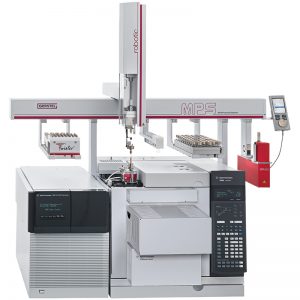A variety of volatile organometalloid species finds application in industrial processes. Among these are e.g. the fumigation of tobacco leaves or flour with phosphine (PH3) for elimination of insects, or the use of sulfurhexafl uoride (SF6) as arc extinguishing media in electrical circuits. The occurrence of volatile metal(loid) species was also proved in emissions of landfills and sewage treatment plants. Most of these volatile compounds are extremely toxic even at very low concentration levels (< mg/m3), therefore a demand for trace analysis of these species exists in industrial hygiene and environmental monitoring.
For this, analytical techniques using cryotrapping preconcentration prior to GC separation and multielement detection by ICP-OES or ICP-MS have shown to be extremely sensitive and effi cient. The most critical step in the analytical procedure after cryosampling is the transfer of the collected species into the GC for separation prior to detection. The usually applied homemade techniques using cryofocusing on glass-wool or support-packed glass tubes cooled by liquid nitrogen at –196°C are tedious to apply, and specially the transfer of the cryocollected sample into the analytical system is subject of complicated handling. In order to facilitate the analytical procedure, we used a commercial system of cryosampling directly connected to a cooled injection system of a GC (TDS G – CIS, Gerstel, Germany) as sample introduction. As example species, we chose synthetic mixtures of PH3 (bp. -88°C) and SF6 (bp.-68°C). We investigated the infl uence of cryosampling temperature in the CIS and the effect of the sample flow during cryotrapping. The optimum cryosampling temperature was found to be –170°C. The sampling flow was varied between 40 and 200 mL/min, and in this flow range no impact on the results was observed. Species separation was performed by capillary GC coupled to ICP-MS (HP7500, Agilent) as specific multielement detector. A home made transfer line was used for the connection of the GC with the ICP-MS. Using this setup, the absolute detection limit for PH3 was determined to be 3 pg and 1 ng for SF6 measured on the isotope 34S with an analytical reproducibility of 3 to 10 % RSD.



